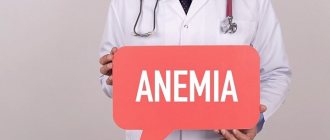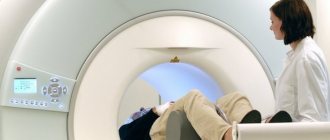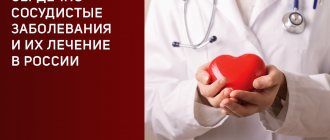Healthy blood vessels are the key to physical and mental health, intellectual activity until old age. To avoid premature wear and tear of your arteries, it is important to develop healthy eating habits and a healthy daily diet.
Familiarize yourself with the main products, the use of which will keep your blood vessels elastic and strong.
Diagnostics in cardiology
Diagnosis of heart disease begins with questioning the patient and examination. The result is a preliminary diagnosis and a plan for further management of the patient. Using laboratory and instrumental methods of further examination, the cardiologist can assess the severity of the disease and decide on further tactics for managing the patient. When a doctor examines a patient, he pays attention to skin color, the presence or absence of shortness of breath, swelling, etc. Quite often, in patients with heart disease and the development of cardiac failure, one can see “blueness” of the lips, tip of the nose, fingers, especially under the nails. And the cardiologist calls this “cyanosis” acrocyanosis (peripheral cyanosis). There are also patients whose skin everywhere on all parts of the body has a “bluish” color - this often happens with very severe heart lesions, heart defects, diseases of the lungs, and body. A cardiologist calls this “cyanosis” central cyanosis. When examining a patient, the cardiologist also pays attention to the pulsation in large vessels, thanks to which a lot of information can be obtained about the state of the cardiovascular system.
Beverages
Drinks consumed in everyday life can be an excellent preventive measure for vascular diseases. Let's also consider the features of drinking alcohol for medicinal purposes.
- Coffee. Able to constrict blood vessels in the brain and abdominal cavity, and expand muscles. With reduced blood pressure, it improves blood flow, eliminates swelling of the legs, and relieves pain from angina pectoris. If you have high blood pressure, strong coffee is dangerous. For atherosclerosis, a high-quality instant drink is indicated, since when cooking a natural drink, substances appear that contribute to the accumulation of cholesterol on the vascular walls.
- Green tea. The benefits of the drink are controversial due to the large amount of caffeine in the composition. However, drinking 2 cups a day will not cause harm. Tea lowers cholesterol levels, smoothly cleanses the walls of blood vessels, and tones.
- Dry red vintage wine and cognac. When consumed in small quantities, drinks dilate blood vessels, prevent the formation of fatty deposits in their lumens, dissolve accumulated ones, and preserve the youth of the circulatory system. Table or sweet wine, on the contrary, increases blood pressure and is not beneficial. Cognac is useful only in a dose of 30-50 ml; exceeding the volume can be harmful.
Electrocardiography
Quite often, a patient comes to a cardiologist with previously taken ECGs. This is not surprising, because the ECG shows the cardiologist the state of the atria, ventricle, and how the heart feels at the moment, whether it receives enough blood, whether there are rhythm disturbances. All this can be read from the ECG, but information from the ECG is information here and now at some fraction of a second, but also if we talk about previously occurring disasters, such as myocardial infarction, then the ECG can tell. To have even more detailed information (this is often to understand what the blood supply to the heart is like when the patient moves, sleeps, laughs, cries. This method is called Hm-ECG (this is an ECG during the day). Such a study can give a cardiologist a lot of information, because that this method monitors the patient’s condition for 24 hours and the likelihood of detecting changes can be much greater, since there is a lot of time involved in monitoring the condition of the heart. Thanks to ECHO-CG, it is possible to uniquely and safely determine the condition of the heart and large vessels for the patient. This method allows you to assess the condition of the heart valves, see how the walls contract, how actively and in what volume blood is ejected from the heart, see with the help of a Doppler study the direction and what intensity the blood moves through the parts of the heart.
Price
The cost of preparations for cleaning blood vessels is determined by the form of release and the manufacturer. The price is also affected by the number of tablets or capsules and the volume of ampoules (for drugs in the form of solutions for infusion). Cost of popular medications for blood vessels:
| Name of the drug | Volume, quantity | Price, rubles |
| Angiovitis | 60 tab. | |
| Atorvastatin | 30 tab. | 270 |
| Dihydroquercetin | 100 tab. | 550 |
| Troxevasin gel | 40 g | 200 |
| Clofibrate | 30 tab. | 450 |
| Lovastatin | 30 tab. | 370 |
| Cavinton | 10 ampoules of 2 ml | 220 |
| Lyoton | 50 g | 470 |
| Heparin ointment | 25 g | 65 |
| Verapamil | 30 tab. | 35 |
| Vinpocetine | 50 tab. | 50 |
| Cardiomagnyl | 30 tab. | 130 |
| Thrombo ACC | 28 tables | 50 |
| Vitrum | 100 tab. | 1500 |
| Cinnarizine | 50 tab. | 40 |
| Antiox | 30 capsules | 2000 |
| Doppelhertz Active | 30 tab. | 150–200 |
Exercise tests
There is another very interesting method for identifying the degree of decrease in blood circulation (this is the so-called myocardial ischemia) these are tests with physical activity: veloergometry (the patient with the ECG electrodes connected is on a bicycle and pedals). The state of the heart and blood vessels is assessed in response to physical activity. A similar method is the treadmill test (only the patient is on a treadmill). Thus, we see that thanks to the combination of all examination methods, it is possible to collect a detailed picture about this disease. Thus, the cardiologist has a clear picture of the disease and is already moving along the precisely planned path of treatment for this disease.
Expert electrocardiographers
Professional cardiographic systems designed specifically for cardiology clinics and departments. Manufactured using the latest technical advances, electrocardiographs are distinguished by their modern ergonomic design, functionality and ease of use. The high-resolution touch screen displays all 12 leads. The quality of electrocardiogram printing will satisfy even the most demanding cardiologist.
Vascular diseases: signs and treatment
22.10.2019
How can you help your blood vessels be healthy? What diseases are there that are common lately? The answer to this question is in this article.
A person lives and does not notice how his arteries and veins throughout the body help to supply nutrients and oxygen to the organs. Vascular diseases in our time, unfortunately, are one of the main causes of mortality. More often these problems occur in children and adolescents.
What diseases do blood vessels have?
Doctors divide types of vascular diseases according to their location; they find the source of the disease. If the central nervous system , then this disrupts blood circulation in the aortas and arteries of various parts of the body. Symptoms of different ailments may be different.
Atherosclerosis
This dangerous disease is quite insidious. Its main cause is “bad” cholesterol. It accumulates in the body with increasing consumption of junk food. Lead to atherosclerosis : diabetes , hypertension , obesity , bad heredity, bad habits.
Symptoms may vary. If we are talking about heart , then pain is usually noticeable in the left side of the chest , radiating to the arm. heart rhythm disturbances , weakness in the legs and arms, and possible fainting. With atherosclerosis dizziness and a burning sensation in the chest occur . If the abdominal region suffers, then problems appear with the gastrointestinal tract, kidneys abdominal pain . There are of atherosclerosis .
Ischemia
This disease occurs when there is insufficient blood in certain vessels that supply the myocardium and brain . Excessive exercise and stress can be its cause. In any case, it disrupts the body's carbohydrate-fat metabolism.
If a person has chest pain radiating to the arm, shortness of breath, arrhythmia, rapid pulse - this may be an indicator of ischemic diseases.
Strokes
A most insidious illness that has often appeared in people lately. Occurs from impaired blood supply to brain . In the process, nerve endings may die and their functions may deteriorate. At first, the symptoms are not noticeable. But if you have weakness and numbness in your arms and legs , as well as a throbbing headache, possible double vision and nausea your doctor immediately .
Hypertension
It seems something normal and not so scary. But symptoms such as pain in the back of the head, in the temples, tinnitus and dark spots before the eyes , dizziness , swelling of the limbs and nausea doctor about your condition . Otherwise hypertension , hypertension can lead to complicated diseases.
VSD
The development of VSD - vegetative-vascular dystonia - is observed when there is a malfunction in the functioning of the nervous system and weakening of blood vessels. insomnia can lead to this - all this is the cause of this disease.
Varicose veins
This is also not such a simple, although common, ailment. It is noticeable when venous patterns appear on the legs , but begins much earlier. If a person has bad heredity, he leads an incorrect lifestyle - all this can affect the blood vessels of the legs . Venotonics and compression garments can help, but this cannot be done without the advice of a doctor .
Diagnostics related to blood vessels
Once again it is worth recalling that only a doctor . An ordinary person may not understand the course of a particular disease and may prescribe the wrong and sometimes harmful medications to himself.
If you see a doctor , he will most likely prescribe a clinical blood . In some cases, biochemical and immunological tests, coagulogram, vascular angiography, ultrasound , MRI or RVG of vessels are also indicated.
It must be remembered that possible complications from vascular diseases are common and unpleasant, so consult a good doctor .
Remedies against vascular diseases
To treat vascular diseases, doctors use various drugs: myotropic and neurotropic drugs, blockers, cardiac drugs, drugs with nicotinic acid and others. But doctors remind: you need to eat right. To do this, you need to prepare dishes from cereals , bran, vegetable oils (especially olive), sea fish and seafood. Biscuits, bread, light vegetable or meat soups, nuts, legumes, seasonal berries and fruits are also useful. Doctors ask you to pay attention to the fact that you need to eat seasonal vegetables and fruits.
You also need to manage stress, regularly measure your blood pressure, take walks, have a hobby, do yoga and Pilates.
Published in Cardiology Premium Clinic
Risk group
The risk group includes people with infectious pathologies during the neonatal period. The likelihood of developing vascular diseases of the brain increases significantly with hemolytic anemia, surgery and head injuries. The mother’s poor lifestyle (abuse of alcohol and tobacco products) can also negatively affect the condition of the child’s brain. A family history of cardiovascular pathologies (for example, myocardial infarction or arterial hypertension in close relatives) doubles the risk of developing cerebrovascular diseases.
Causes of vascular insufficiency
The acute variety occurs in various cardiac pathologies, massive blood loss, poisoning, severe infections, adrenal insufficiency, organic damage to the nervous system, extensive burns, traumatic brain and general injuries.
The root causes of the chronic form are autonomic and neurological factors, organic lesions of the brain stem and heart, in which there is hypotension with constant low blood pressure and, as a consequence, constant systemic hypoxia of organs and systems, the impossibility of adequate tissue perfusion with increasing consumption due to stress.
General rules for eating foods
A properly formulated diet to maintain arteries and veins in good condition is not difficult. The main thing is to know the general principles of a healthy diet that is useful for strengthening the vascular system:
- reducing the amount of fatty meat and dairy products in the diet;
- preference for fermented milk products;
- replacing animal fats with unrefined vegetable oils;
- reducing the amount of salt consumed in food;
- reducing calories in ready meals;
- increasing the amount of greens and vegetables in the diet;
- adding whole grain cereals to the daily menu;
- dividing meals into several times (should be 4-5 times a day);
- drinking purified water.
Drugs that promote resorption
Chymotrypsin is a drug that helps break down blood clots, exudates, and fibrin. Prescribed as intramuscular injections of 5-10 mg in saline solution, lasting 20-30 days.
Fibrinolysin is a drug with high activity against fresh blood, so if the hemorrhage has occurred recently, treatment begins with it. It is prescribed as a sub injection in combination with fibrinolysin and heparin for 10-15 days. If necessary, chymotrypsin can be used after this. If the hemorrhage occurred a long time ago, it is not advisable to administer Fibrinolysin.
Another drug in this group, Lidaza, is contraindicated in recent hemorrhages. And in case of long-standing hemorrhage, it can provoke it again, therefore it is also contraindicated.
Anticoagulants
Heparin , as an active substance, has a multicomponent effect: absorbable, lipotropic, anticoagulant. It is prescribed in the form of intramuscular injections according to the following scheme: the first 4 days, 4 daily injections, the next 4 days, 3 injections, then 4 days, 2 injections and another 4 days, 1 injection.
The dosage is up to 5000 units. The drug is not used in large doses as complications are possible.
Iodine preparations are prescribed to increase the fibrinolytic activity of the blood. In addition, they reduce the content of b-lipids and cholesterol. Prescribed orally 5-10 drops in milk twice or thrice a day, or in the form of pills with a dosage of 0.0005 g. The course of treatment is at least one month, carried out intermittently for many years.









